Projects of the Urban Ecology Research Group
The Interreg project "Lake Constance Biodiversity Roof" (BoBiDa), led by the Austrian Institute of Ecology and the Zurich University of Applied Sciences, is supported by the IBK Small Projects Fund. The aim of the project is to exchange experiences on the topic of nature-oriented building and biodiversity promotion on green roofs among actors from planning, administration and implementation in the Lake Constance region. Guided tours, excursions and events were organised to raise awareness of the topic of biodiversity in urban areas.
Contact: Stephan Brenneisen
Publications, student work and further information: Interrreg Alpenrhein-Bodensee-Hochrhein, bunt & artenreich
As part of climate adaptation strategies, many cities are developing master plans to cool urban heat islands. The research group Urban Ecology deals with spatial analyses, develops and optimizes measures and processes for effective cooling of urban spaces and buildings.
Contact: Stephan Brenneisen & Jascha van Gogh
Publications, student work and further information: Projektbeschrieb Klimadach (PDF 1.12 MB), Dachgrün im Stadtökosystem (PDF 1.32 MB), Bachelorarbeit Thierry Sebele (PDF 6.59 MB), Masterplan Klima Birsfelden (PDF 2.39 MB), Bachelorarbeit Seraphin Müller (PDF 11.42 MB)
The aim of the project "Citizens - Bees - Biodiversity Vorarlberg" is to valorize and thus further disseminate measures for flower-visiting insects Furthermore, the knowledge about green roofs, their effects and possibilities in the region of Lake Constance shall be strengthened. The potential of biodiversity and retention roofs has so far hardly been seen as a possible climate change adaptation measure or as a possibility for substitute habitats for insects and birds and thus also as a steppingstone for biotope connection in the settlement area.
Contact: Stephan Brenneisen
Publications, student work and further information: Biodiversitätsdach Koblach, Webseite Bürger, Bienen, Biodiversität
Since the greening of the roofs of the Seewasserwerk Moos in Wollishofen in 1918, a rich flora has developed and been preserved. The value of the green roofs was recognized and documented by Elias Landolt in 2001. 175 plant species, some of them rare and endangered, including 8 orchid species, were identified. Since 2015, the Urban Ecology Research Group has been accompanying the upcoming renovation work on the buildings, with the aim of securing the valuable green roofs beyond the construction phase.
Contact: Stephan Brenneisen, Rafael Schneider, Lorenz Achtnich
Publications, student work and further information: Aktueller Zustand der Dachbegrünungen des Seewasserwerks Moos (PDF 3.15 MB), Projektdetails
Within the framework of the action plan for the implementation of the Swiss Biodiversity Strategy, scientific findings on the ecological compensation potential of green roofs measures are being developed for the BAFU. These serve to review and further develop existing instruments for the implementation and promotion of biodiversity in settlement areas.
Contact: Stephan Brenneisen, Alex Szallies
Publications, student work and further information: Ökofaunistische sowie vegetationstechnische Beurteilung und Optimierung von begrünten Dachflächen im Kontext der Biodiversitätsförderung im Siedlungsraum (PDF 11.59 MB), Heuschrecken auf Gründächern (PDF 2.37 MB), Bachelorarbeit Jonas Frei (PDF 7.43 MB)
The lapwing, a ground-nesting bird species threatened with extinction in Switzerland, breeds mainly in agricultural areas on fields. However, breeding attempts or broods on greened flat roofs also occur time and again. We investigate in almost traditional roof breeding areas in Emmen, Canton Lucerne and other locations under which conditions greened flat roofs do not become an ecological trap for lapwings, but allow successful breeding. Enhancement measures for the enrichment of the soil fauna are established and their effect is investigated.
Contact: Stephan Brenneisen, Silvan Oberhänsli
Publications, student work and further information: Kiebitzbruten auf Flachdächern in Emmen (PDF 815 kB)
Direct revegetation methods (hay transfer) involve the transfer of seed from species-rich donor areas as a valid alternative to seed mixes to increase target area biodiversity or create ecological corridors. The most used methods for transferring and collecting valuable diaspora material are hay threshing (meadow threshing), hay brushing (brush out), hand-collected seed (hand collecting) and hay transfer. We apply several of these methods to green roofs and study vegetation development.
Contact: Stephan Brenneisen
The urban ecology research group supervises topic related student projects and collects long-term data on the distribution of fire salamander populations at various watercourses in the Wädenswil area. The aim of the data collection is to gain knowledge about the population structure of fire salamanders in the settlement area. Among other things, any exchange between spatially separated populations will be documented by means of photo-identification. The students are involved in the data collection and analysis in the context of semester- and bachelor theses.
Contact: Stephan Brenneisen, Silvan Oberhänsli
Publications, student work and further information: Bachelorarbeit Valerie Arnaldi (PDF 8.38 MB), Bachelorarbeit Céline Schlatter (PDF 8.19 MB)
The in large quantities occurring death of amphibians on roads near spawning grounds can be prevented to a large extent through evidence-based amphibian protection. During spring amphibian migrations, countless volunteers engage in amphibian conservation efforts to help amphibians to cross roads safely. To relieve volunteers, amphibian tunnels are built at particularly busy locations. The research group Urban Ecology accompanies projects on amphibian guidance systems and participates in success controls. For example, on behalf of the Swiss Federal Office for the Environment, it investigated how amphibian populations have developed ten years after the construction of guidance systems and ascertained how well a particular system is working.
Contact: Stephan Brenneisen
Publications, student work and further information: Gastbeitrag Inside - Funktionieren Amphibientunnel? (PDF 764 kB), Gastbeitrag Inside - Verkehrsregelung für Amphibien (PDF 1.09 MB), Evidence-Based Amphibian Conservation A Case Study on Toad Tunnels (PDF 1.05 MB), Semesterarbeit Svenja Hirt (PDF 6.04 MB), Semesterarbeit Andreas Seitz (PDF 19.81 MB), Semesterarbeit Eveline Häsli und Andreas Hofstetter (PDF 6.57 MB)
The Urban Ecology Research Group propagates native orchids generatively (from seed) with the aim of establishing them on natural sites, but mainly on natural green roofs (see Establishment of native orchids on extensive green roofs). Propagation takes place in vitro and is always as close to nature as possible. In addition to asymbiotic propagation on standard nutrient media, we focus on basic research in the field of symbiotic propagation. Possible symbiotic partners for orchids are isolated and the interaction of mycorrhizal fungi with different orchid species is investigated. In the process, fungal species that are unexplored and unknown to science keep coming to light.
Contact: Rafael Schneider, Lorenz Achtnich
Publications, student work and further information: Gastbeitrag im Pacific Horticulture Magazine - Orchid Resilience Green Roof Conservation in Switzerland (PDF 676 kB)
Field studies by the Urban Ecology Research Group have shown that green roofs are habitats for native orchids. In 2009, eleven orchid species were found to have spontaneously colonized green roofs throughout Switzerland. Orchids are considered to be weak in competition and react strongly to environmental influences such as nitrogen increase, soil compaction or intensive cultivation. Orchids can find a substitute habitat on near-natural designed and extensively maintained green roofs. Success parameters such as substrate type, substrate strength, water availability or maintenance were elicited and specifically applied to newly established green roofs. Since spontaneous establishment can take many years, initial planting with seedlings propagated in vitro (see In Vitro Propagation of Native Orchids) supports orchid establishment. If an orchid population can establish itself on a green roof, an increased ecological value can be determined due to the orchids and their accompanying plants. Orchids are not only seen on roofs as a seal of approval for species-rich and functioning habitats. Orchid meadows also provide an adequate habitat for many other floristic and faunistic groups and thus increase biodiversity in urban areas.
Contact: Rafael Schneider, Lorenz Achtnich
Publications, student work and further information: Gastbeitrag in Gallus-Stadt Orchideen auf den Dächern des Kantonsspitals (PDF 733 kB), Projektdetails
On the 1914-18 built and greened water treatment buildings of the Seewasserwerk Moos in Wollishofen a rich flora could develop and maintain itself. In the more than 100 years a species-rich "orchid meadow" with nine orchid species, some of which are rare and all of which are protected throughout Switzerland established. Since 2009, the orchid populations have been monitored by the Urban Ecology Research Group. In this process, all blooming orchids in the always same sub-areas are counted annually with a systematic sampling procedure. In order to estimate the populations of the whole roof area, the data are extrapolated. The long-term monitoring shows that the number of flowering individuals is subject to strong fluctuations. Of the most common orchid on the roofs, the green winged orchid (Anacamptis morio), an average of 15,104 individuals bloomed over the last ten years. The number of individuals recorded can be compared with the first vegetation survey carried out in 1999 by the geobotanist Elias Landolt. Based on the site preferences of the various orchid species and in combination with the indicator values of the 128 other vascular plant species that could be detected on the roofs in 2019 (see Floristic and vegetation ecology analyses of the green roofs of the Seewasserwerk Moos), a trend can be identified: "If we look at the "turnover" species, we see that especially species of wet habitats decreased, while those with medium and low moisture requirements increased." The reason for this is probably the increase in dry and sometimes very dry vegetation periods observed over the last two decades.
Contact: Rafael Schneider, Lorenz Achtnich
Publications, student work and further information: Vierteljahrsschrift NGZH - Ein Refugium für Orchideen (PDF 5.86 MB), Aktueller Zustand der Dachbegrünungen des Seewasserwerks Moos (PDF 3.15 MB)
As a result of intensive human use, light forests rich in structure and species were widespread in Switzerland until the 19th century. The habitat "light forest" is considered to be particularly diverse and offers ideal habitat conditions for many warmth- and light-loving plant and animal species. Successively, light forest sites have developed into dense and dark high forests, which are not only managed differently, but also no longer represent an ideal habitat for many light- and heat-loving species due to the heavy shading. Keeping open light forest sites is extremely time-consuming and cost-intensive, but in view of the threat of habitat loss, there is virtually no alternative.
The research group Urban Ecology is investigating in a field trial the influence of grazing of scrubby sites on the vegetation. Is it possible to restore or maintain the sparse condition of the area and can the orchids defined as target species benefit from the measures? An initial success control has shown that both mechanical management and grazing by goats have a positive effect on the vegetation.
Contact: Rafael Schneider, Lorenz Achtnich
Publications, student work and further information: Bachelorarbeit Selina Sigrist (PDF 5.85 MB)
Beetles are an important group of deadwood recyclers and decomposers, and their occurrence says a lot about the condition of individual trees to entire forest areas. The diversity of the beetles living in and on deadwood seems to be almost infinite. The urban ecology research group is involved in a variety of studies with different project partners. In various research projects these xylobiont beetles are collected, determined and used to assess the quality of the study site. Special mention should be made of the study in the Crap Ses pine forest, in which five first records for Switzerland were obtained.
Contact: Alex Szallies, Stephan Brenneisen
Publications, student work and further information: Vielfalt der Totholzkäferfauna im Waldföhrenwald Crap Ses, Surses (Graubünden) (PDF 880 kB), «Primeval forest relict beetles» of Central Europe: a set of 168 umbrella species for the protection of primeval forest remnants (PDF 1.56 MB)
Switzerland has a special responsibility for the beetles of the alpine sites, especially the high mountain species, many of which are endemic or relict. They are the oldest species of the native beetle fauna. Their study can tell us a lot about the evolution and also the genesis of the landscape. The work of the Urban Ecology Research Group has already led to the description of several new species of the Alpine region, also for Switzerland.
Contact: Alex Szallies, Stephan Brenneisen
Publications, student work and further information: Oreonebria (Marggia) bluemlisalpicola sp. nov., eine neue hochalpine Laufkäferart der nordwestlichen Schweizer Alpen (PDF 788 kB), Neubewertung von Nebria (Nebriola) heeri, Untersuchung über das Vorkommen des Schnellkäfers Berninelsonius hyperboreus (GYLL.) in Nidwalden (PDF 840 kB), Schlussbericht Projekt Reliktpopulationen von endemischen Prioritätsarten aus den Schweizer Nordalpen (PDF 1.39 MB)
Green roofs are important ecological compensation areas in urban areas. Depending on substrate thickness and composition, a different habitat is created and thus different beetle species settle. A wide range of more or less heat- and light- preferring species, reminiscent of those of dry and semi-dry grasslands, find a secondary habitat on green roofs. The Urban Ecology Research Group has been studying the occurrence of beetles on green roofs for over a decade. To date, around 54,355 beetle individuals have been counted and identified. Thus, 543 beetle species could be detected on green roofs.
Contact: Alex Szallies, Stephan Brenneisen
Publications, student work and further information: A Global Comparison of Beetle Community Composition on Green Roofs and the Potential for Homogenization (PDF 861 kB), Carabiden communities on green roofs in Switzerland - synthesis and perspectives (PDF 1.99 MB)
In recent years, a conflict of goals has arisen in the use of building roofs. After the catastrophe of Fukushima and the subsequently elaborated energy strategy of the federal government 2050, roof areas are increasingly used for the installation of photovoltaic systems. In practice, unfortunately, such green roof areas often have to give way when solar energy use is subsequently installed on a roof.
We develop and investigate installation methods and technologies how the combined solution of green roofs and solar energy use works and represents a gain for the climate adaptation of cities through precipitation retention, biodiversity as well as energy production.
Contact: Alex Szallies, Stephan Brenneisen
Publications, student work and further information: Vertikal aufgeständerte, bifaciale Solarmodule zur PV-Nutzung begrünter Dächer (PDF 5.15 MB), Semesterarbeit David Hauswirth (PDF 3.11 MB)
Alpine Farming and Tourism Canton Schwyz (AWUT SZ)
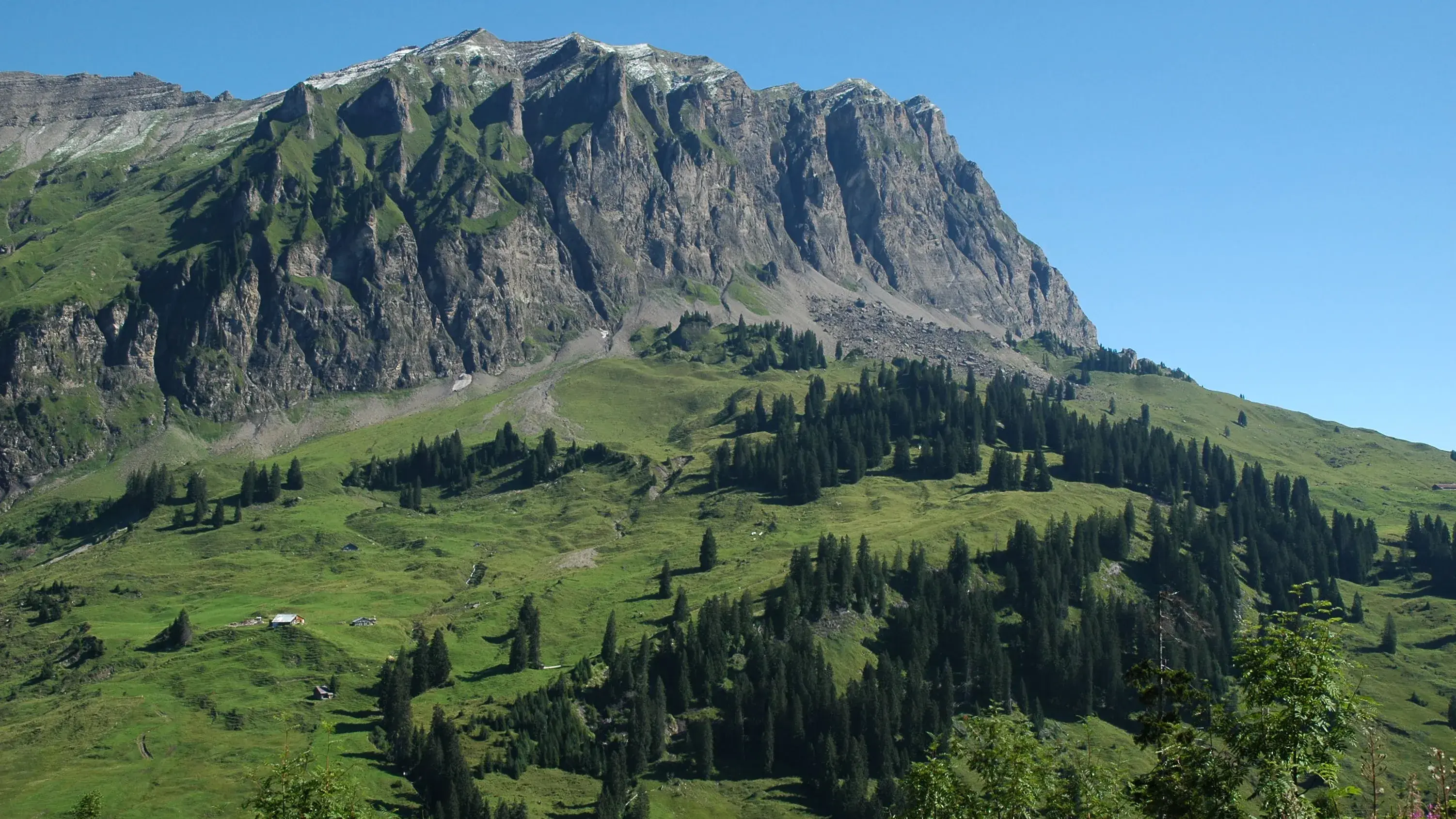
With around 400 farms, alpine farming in Canton Schwyz is an important part of agricultural production, contributes to shaping the landscape and offers identification and identity. Summer tourism has gained in importance in Canton Schwyz over the last 20 years. There is increasing interaction between alpine farming and tourism.
In a first phase, AWUT SZ is to record the situation, identify any areas of conflict and identify possible joint development potential. From this, behavioural instructions will be elaborated and communicated through appropriate channels to address conflicts.
In a second project phase, cooperation projects between alpine farming and tourism will be developed to impart knowledge about alpine farming and to increase joint value creation.
Project partners:: Alpwirtschaftlicher Verein Kanton Schwyz, Schwyz Tourismus
Client: Alpwirtschaftlicher Verein Kanton Schwyz, Schwyz Tourismus
Duration: 2020 bis 2024
Further information: Schwyz Tourismus >Alpwirtschaft
Safe Hiking 2040 - Strategies for hiking trails in a changing climate
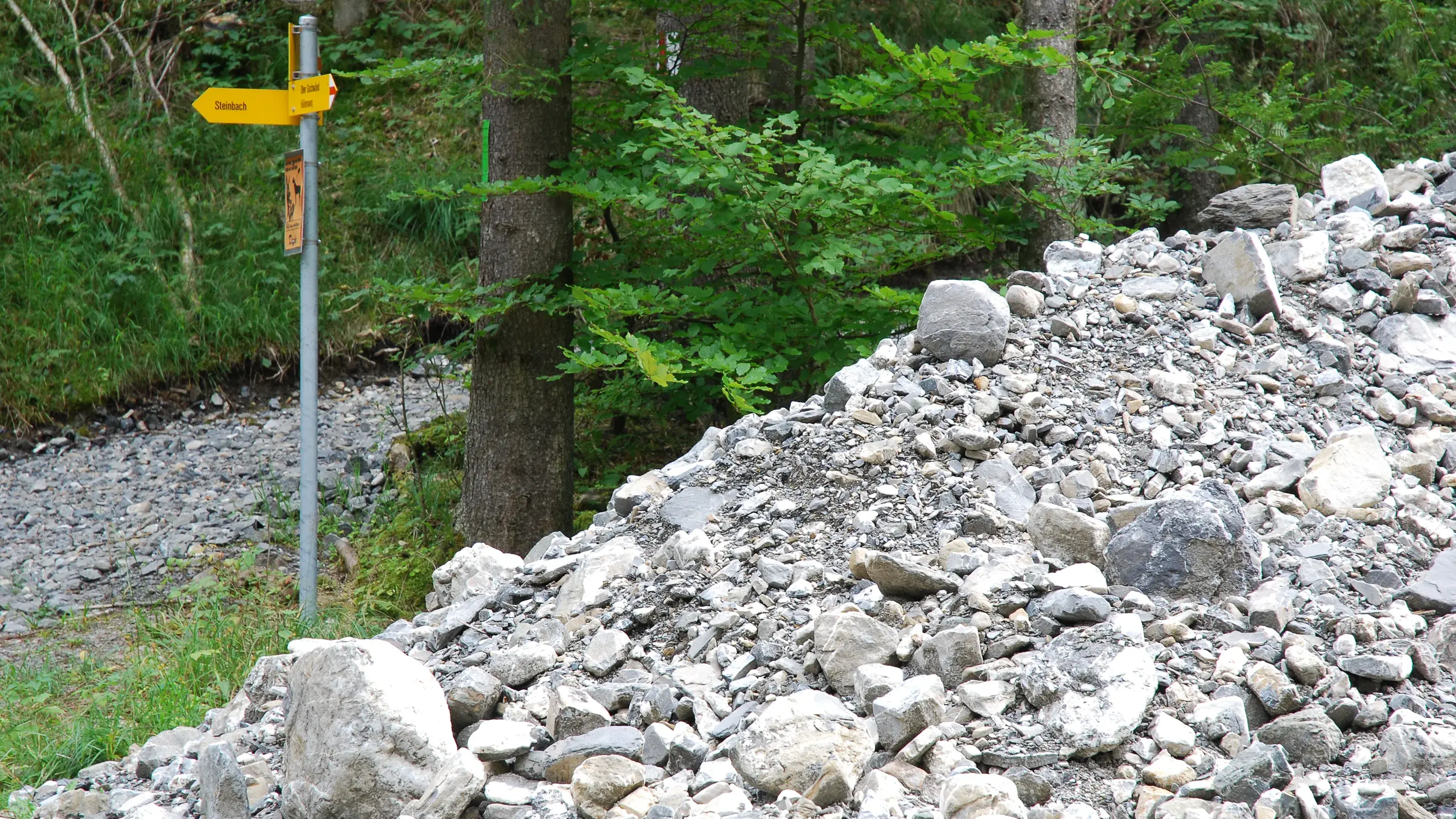
The project Safe Hiking 2040. Strategies for the hiking trail system in a changing climate as part of the federal government's pilot programme Adaptation to Climate Change from 2019 to 2021 will prepare the hiking trail system for the changed challenges posed by climate change.
The Swiss climate scenarios show an increase in temperature in the coming decades as a result of climate change, even with consistent climate protection. There will be different climatic changes depending on the region; drier summers, more intense precipitation, more hot days and winters with less snow. This has a direct impact on the activity of hiking and the hiking trail infrastructure, which is exposed to the weather. Trails and structures are exposed to increasing natural hazards and erosion, but also to more intensive use. This raises questions about the safety of users and the costs for the hiking trail system. However, it can also open up opportunities for the leisure activity of hiking and thus for tourism and society. A controlled development of cool favourable areas and the extension of the hiking season opens up new perspectives for the regions.
The Safe Hiking 2040 project compiles basic information on the effects of climate change on hiking and describes which climate risks and opportunities arise from the changing processes and how and with which instruments adaptation strategies can be initiated. It shows that the processes and organisational forms that exist today are basically suitable. With working methods adapted in the regions, the challenges can be met situationally and pragmatically in the future.
The findings are summarised in two sub-reports for those responsible for the hiking trail system. Partial report 1 presents the project goals and the procedure, explains the essential basic principles and results, and shows possible procedures for working on the topic in more depth in the regions. Sub-report 2 offers a simple working tool. The expected processes and their effects on the hiking trail system are clearly presented, as well as possible measures for proactively dealing with these effects.
Project partners: Schwyzer Wanderwege, Schweizer Wanderwege, Bundesamt für Umwelt (BAFU), WSL SLF, St. Niklaus VS, Kanton Wallis, Kanton Graubünden, Wanderwege Graubünden
Client: Schwyzer Wanderwege, Schweizer Wanderwege
Duration: 2019 bis 2022
Further information: Klimaanpassungsprojekt F.11 Sicher Wandern 2024, SWW Klimawandel und Wanderwege
Consultancy Assessment for the Development of BSc Tourism and Entrepreneurship at Khorog State University, Tajikistan
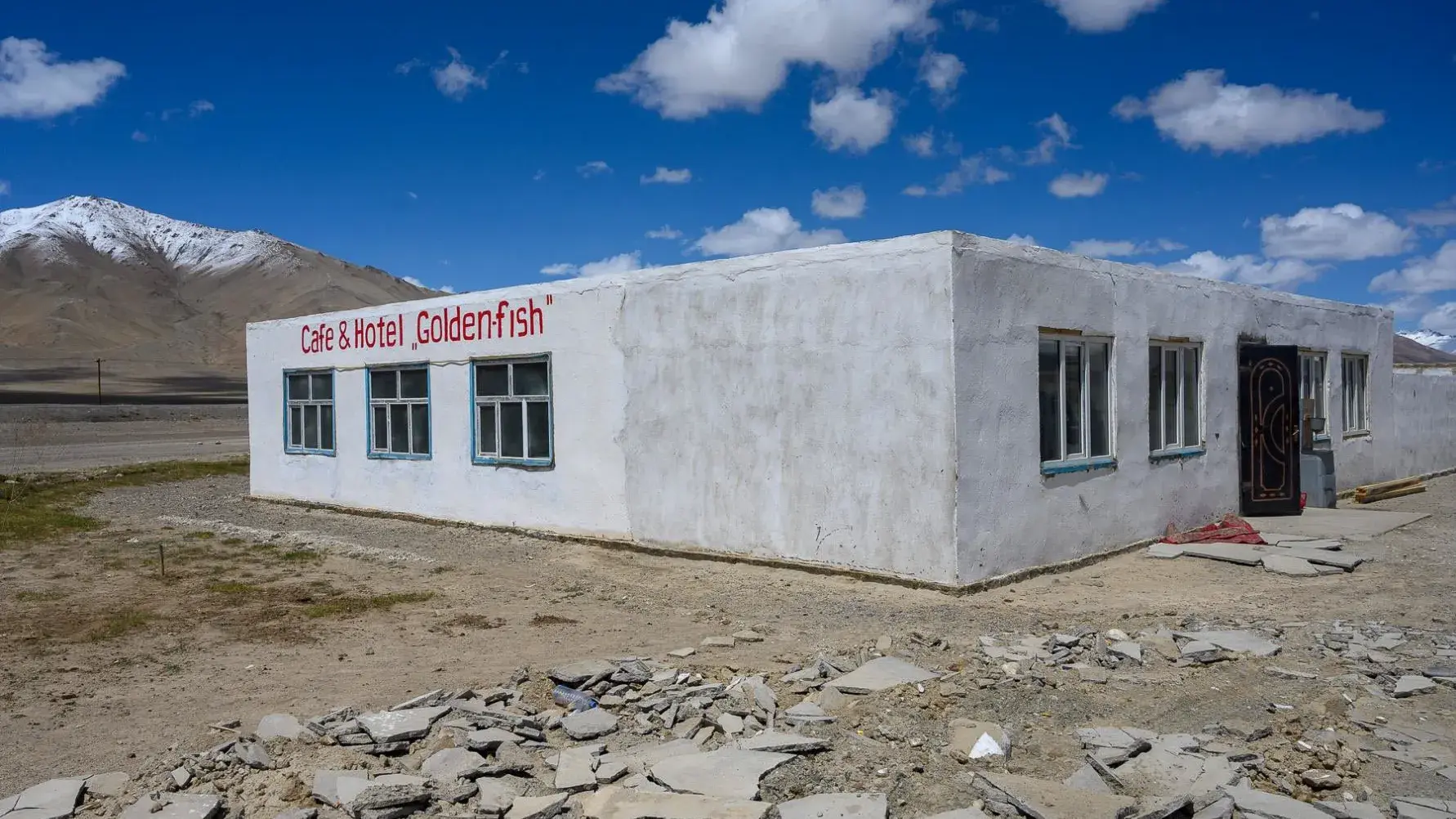
In cooperation with the Mountain Universities Partnership (MUP), Khorog State University (KSU) is pursuing the ambitious goal of introducing a Bachelor of Tourism & Entrepreneurship at the Faculty of Economics.
</p><p>An analysis of the tourism situation and entrepreneurship has shown that Tajikistan in general, and the Pamirs in particular, offer great potential for a wide variety of tourism activities. There are opportunities in mountain tourism, cultural tourism, health tourism, adventure tourism and hospitality. However, Tajikistan also needs to catch up with providers from Uzbekistan and Kyrgyzstan. Seasonality, with a focus on the months from May to September, is a challenge, especially in the Pamirs. Geographical location and infrastructure make accessibility difficult and Tajikistan remains relatively unknown as a travel destination worldwide. Moreover, the uncertain political situation with the border to Afghanistan, despite it being effectively impermeable, makes it difficult to promote the region in a positive light, due to all the negative reports associated with neighbour.
</p><p>With regard to entrepreneurship, there is often a lack of financial resources and business acumen. Legal framework conditions pose additional challenges to products and services.
The analysis of the situation in Gorno-Badakhshan Autonomous Region (GBAO) has shown that there is a lack of knowledge and implementation experience. There are low-threshold continuing education programmes, which are available to people working in tourism, but without formal qualifications, and provide the practical essentials. However, the Bachelor of Tourism and Entrepreneurship is intended to be the first comprehensive practice-oriented training for the various aspects of tourism and entrepreneurship. </p><p>The first cohort is scheduled to commence in 2022, is to last four years and be offered entirely in English. Initially, an intake of around 20 to 25 students from Tajikistan and the surrounding countries is envisaged. Five focus areas will ensure the practical relevance and the orientation towards the needs of tourism and entrepreneurship in Gorno-Badakhshan Autonomous Oblast (GBAO).
With the Bachelor of Tourism and Entrepreneurship, MSU and KSU are creating the basis to strengthen the sustainable development of the entire region through tourism and entrepreneurship.</p>
Project partners: Khorog State University Tadschikistan, PECTA, University of Central Asia (UCA)
Client: Mountain Universities Partnership
Duration: 2020 bis 2021
Regional Nature Park Schaffhausen RNPSH
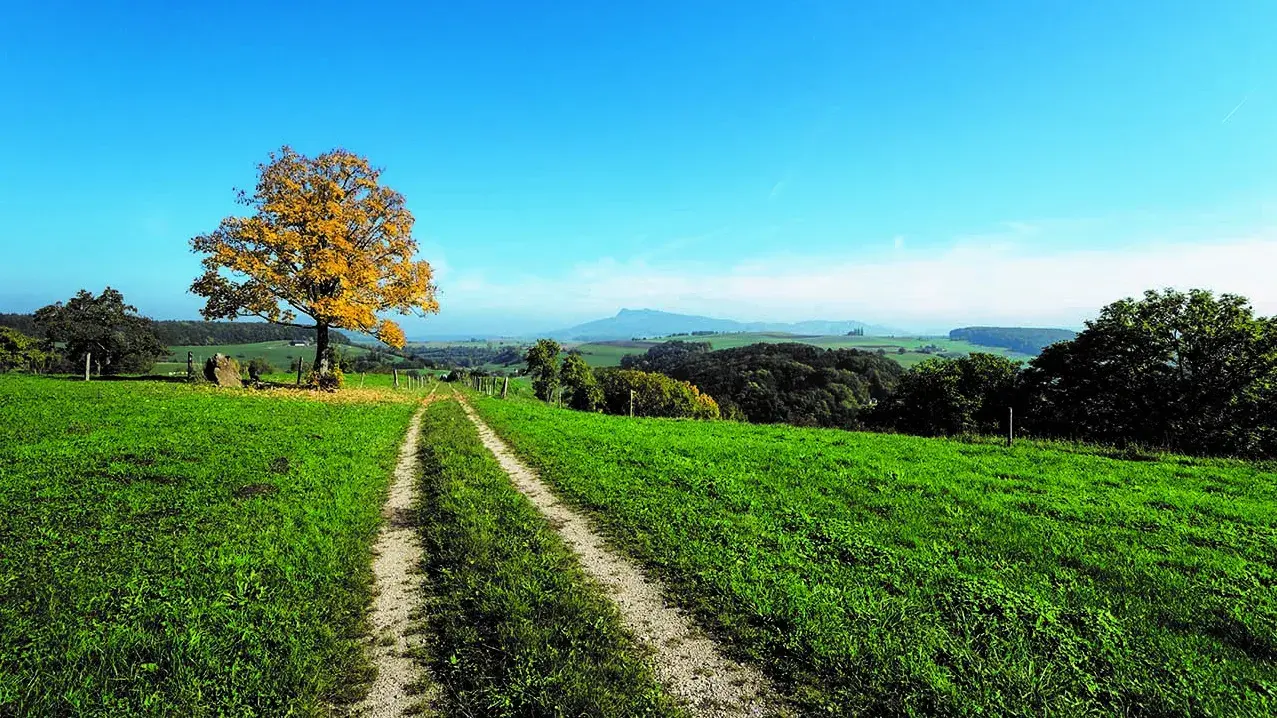
In the establishment phase from 2014 to 2017, the Regional Development Research Group had the overall project management and ran the office of the Regional Nature Park Schaffhausen on a mandate basis. Projects in the areas of agriculture, business, tourism, nature, education and culture were developed and realized. The formation of a network between actors from the region promoted joint, sustainable development and strengthened value creation. After a successful start into operation in 2018, the research group regional development takes over tasks in the field of knowledge transfer and ensures the mutual benefit between practice and teaching.
Project partners: Schaffhausen Nature Park, Bioforum
Client: Association Regional Nature Park Schaffhausen
Duration: establishment phase 2014 to 2017, operation phase 2018 to 2027.
Further information: Naturpark Schaffhausen
EN: Corporate volunteer in Swiss parks
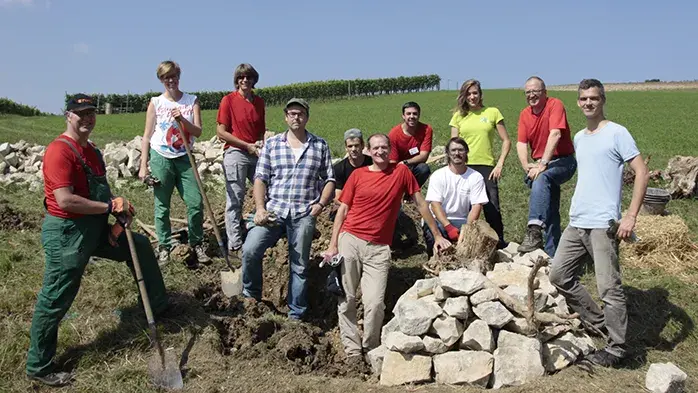
The Swiss Parks' volunteering offer is aimed at companies that would like to actively support the environment with their employees. The assignments contribute to the preservation of species-rich habitats, provide experiences of nature and generate added value for the region in which the assignment is carried out. The research group supports parks throughout Switzerland in the development of professional volunteering assignments.
Project partners: Network, parks, companies
Client: Verein Netzwerk Schweizer Pärke
Duration: 2013 to 2018
Further information: Netzwerk Schweizer Pärke
Illgau, Morschach, Muotathal - three communities, one region
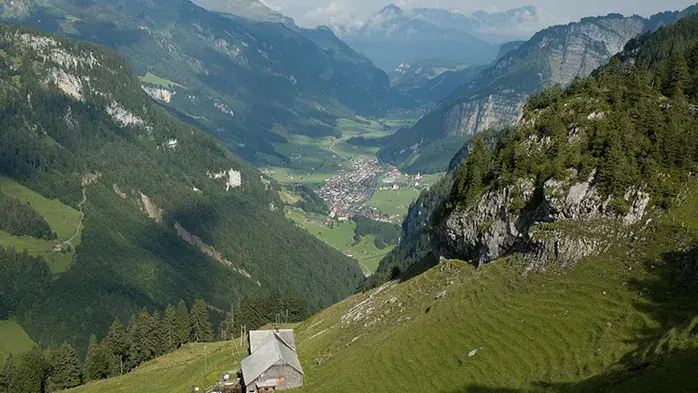
For more than ten years, the three Schwyz communities of Illgau, Morschach-Stoos and Muotathal have been working intensively on a joint regional development. In order to bundle the various projects under one roof, the three municipal executives, accompanied by the Regional Development Research Group, formulated guiding principles in 2014 to which the respective municipal guiding principles are oriented.
Project partners: Municipality of Illgau, Morschach and Muotathal
Client: Netzwerk Muotatao
Duration: 2014





















